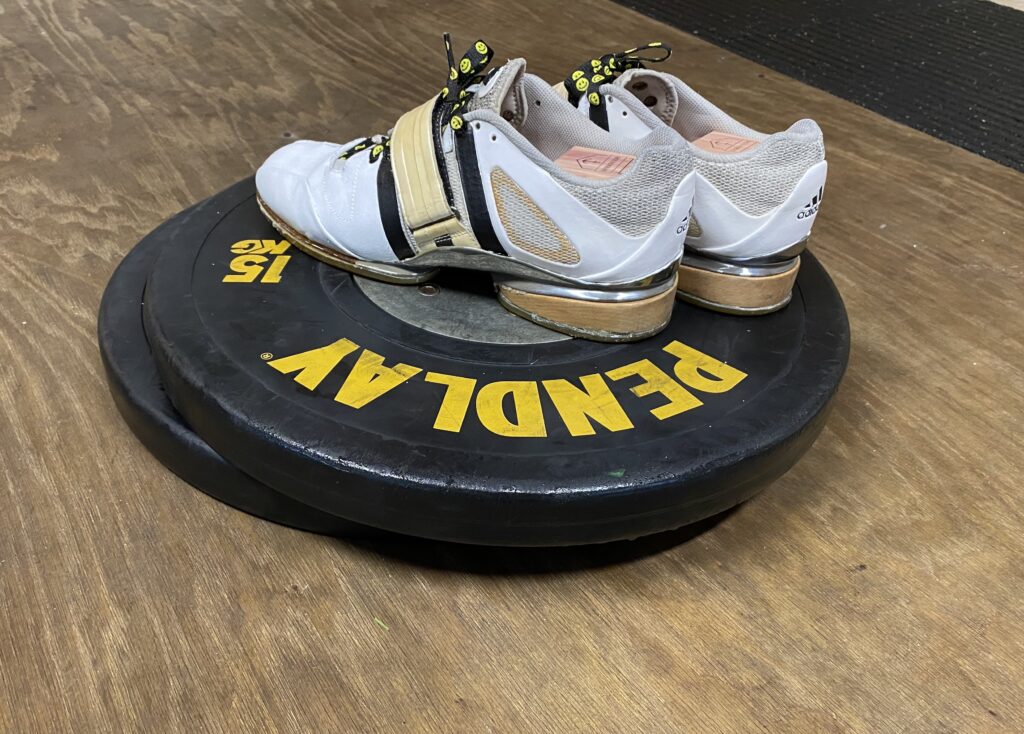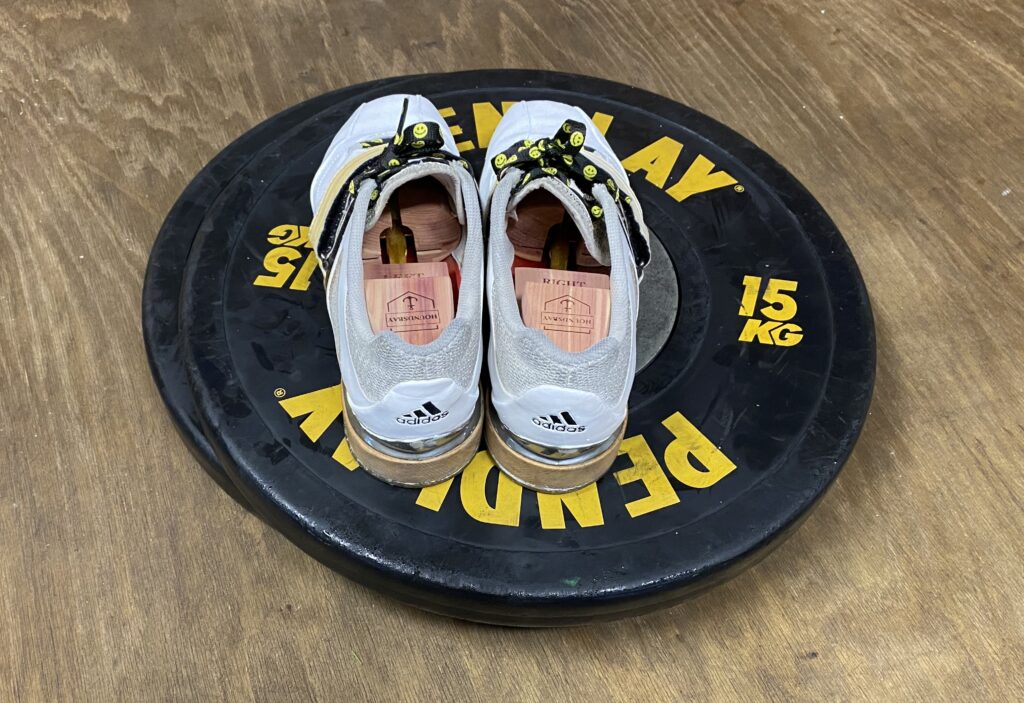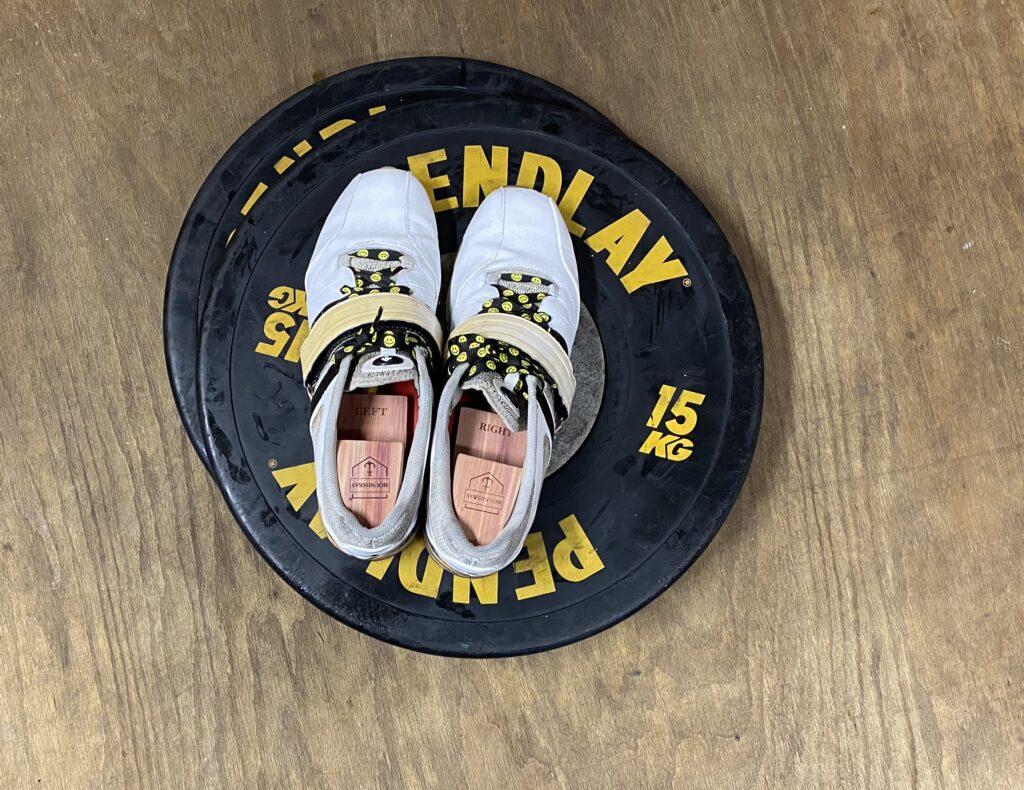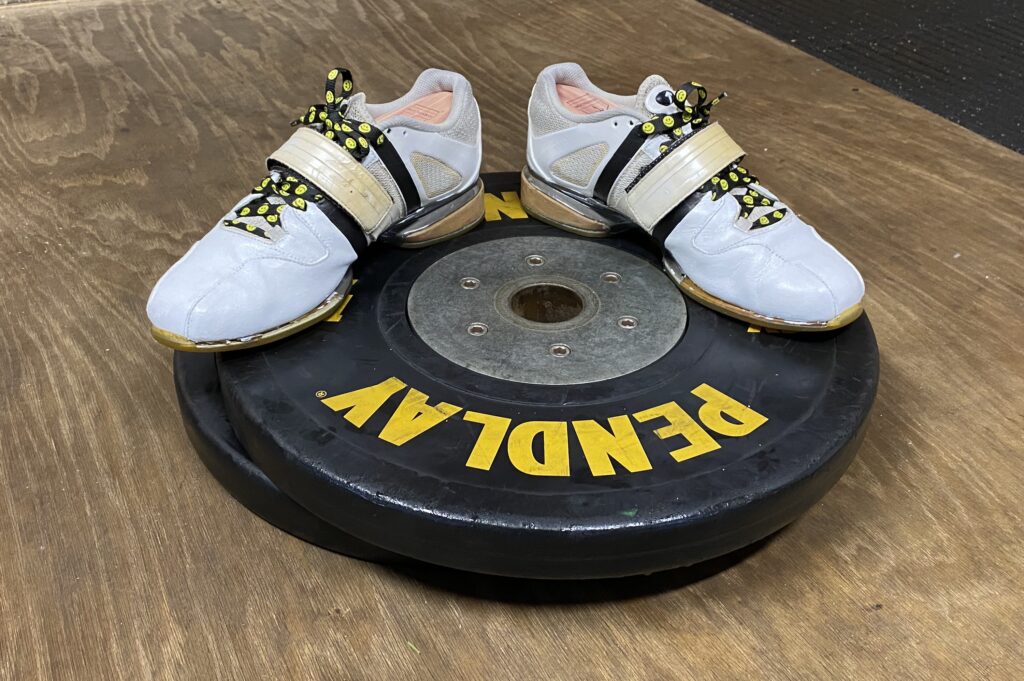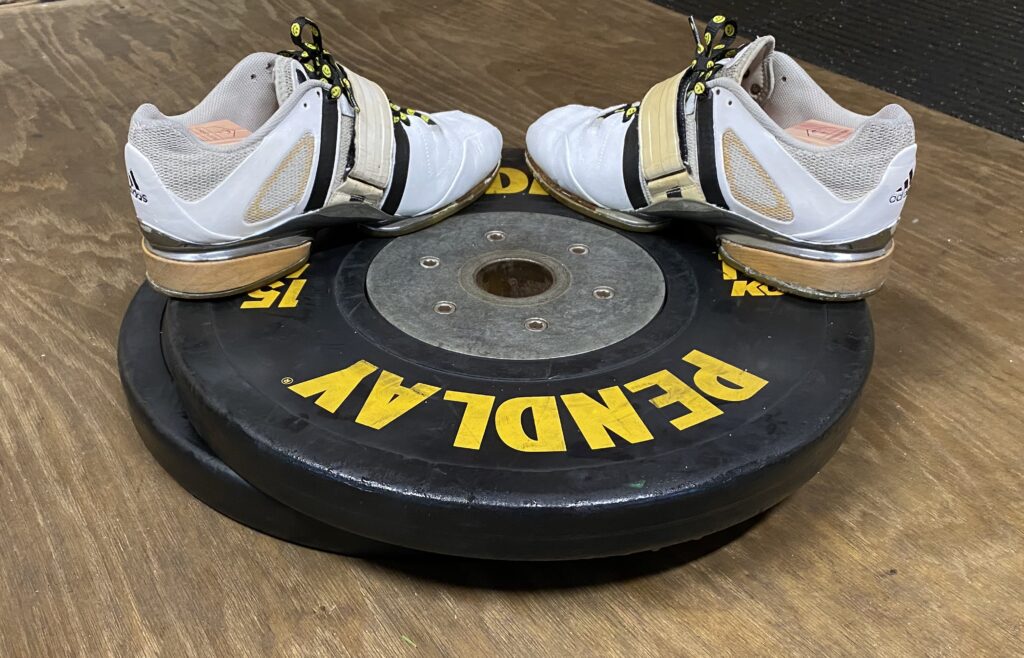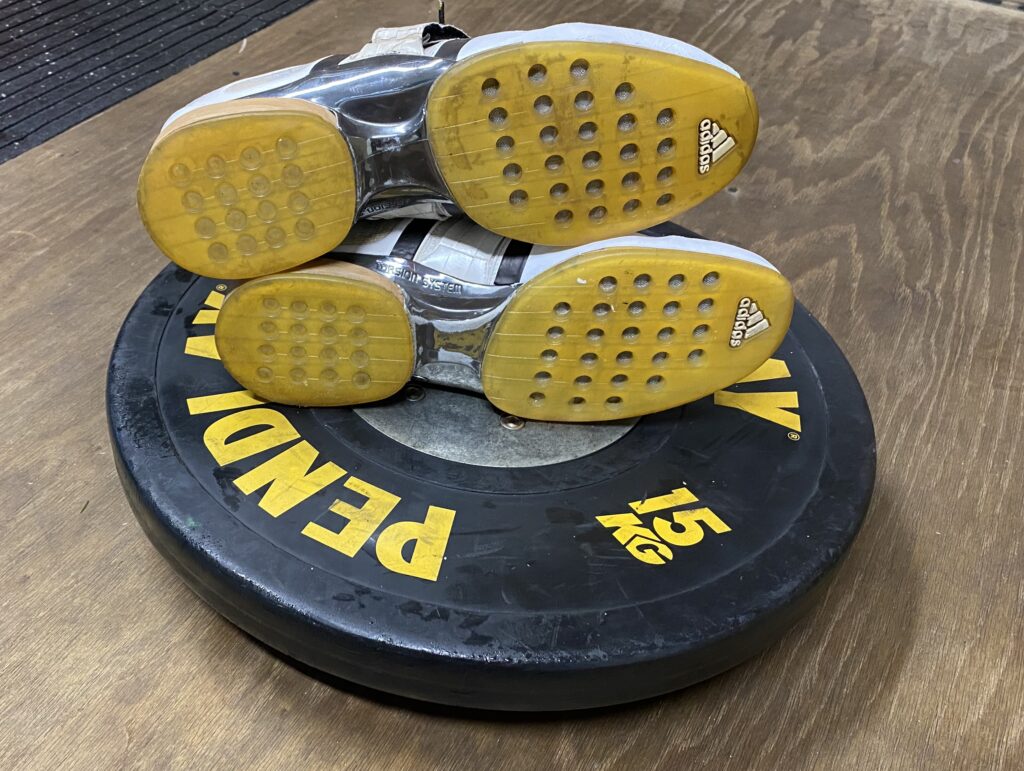2008 Adidas Adistar Weightlifting Shoes
These are often considered to be the “Holy Grail” of weightlifting shoes, but, are they actually worth it? Good examples of these, in a common size (9-11), can easily go for $600-$1000. When they came out in 2008, they were about $200. That’s a lot of loot for a piece of equipment, which will only get into *worse* shape as you use it. So, what makes these worth so much, to so many lifters? This is, essentially, the last iteration of Adidas’ high-end approach to crafting an Olympic Weightlifting shoe – these were made in Germany. Adidas spared no expense on the procurement of materials, and implementation of (at the time) cutting edge technologies in what is a fairly niche sport. After this, the shoes became much more mass produced, and synthetic, in terms of materials for uppers, heels and tread.
The materials; the upper on these is made of polyurethane-coated Kangaroo leather, the heel is naturally finished wood, forefoot and heel are separated via the TorsionSystem plate, which saves a substantial amount of weight and is unique to this shoe. The shoe is treaded in a natural gum rubber, with ventilation of the shoe running through the bottom of the forefoot (via mesh and holes in the gum rubber sole) and also the rear of the shoe (via climalite panels).
The fit; this can be subjective, but I have a slightly wide forefoot with a pronounced arch. These are the best *fitting* Olympic Weightlifting shoes that I own. They feel incredibly well connected to the foot, in a way that is truly unique to this shoe. I own, and have lifted in, almost every WL shoe produced in the last 25 years. These have the best *fit* of all.
The lifts; this is where the shoes lost me, in the most important category. It’s not because they’re not good lifters, it’s because I really need (or prefer) a 1″ heel for clean and jerks. These are fine shoes for snatch, where I can do with less of a heel lift, but they don’t check all of the boxes for me, in terms of what I want in a lifter. They feel incredibly light on the foot, which I do like, and they plant nicely. But, that roughly 1/4″ of heel shortage on the Adistar’s makes it a shoe that will continue to collect dust in my collection, instead of making music on the platform.
The Takeaway; I bought mine for $32, shipped, in horrendous condition. I completely refinished them myself, with about $60 in materials and about 6 hours of time. Were they worth it? At that price, and amount of time invested, yes. Would I spend $600-1000 on a set that’s in nicer condition? Absolutely not. A weightlifting shoe, itself, will not add a single kilogram to your total. It might put you in a better position, from a leverage standpoint, but any shoe with similar heel height and drop would do the same. These sheos have become clout magnets, status symbols, and they’re definitely not a sign of anything beyond the wearers purchasing power, or cobbling skills.
